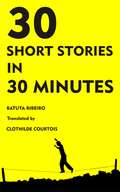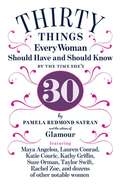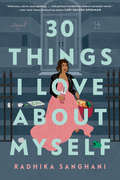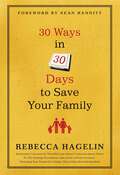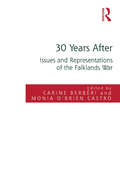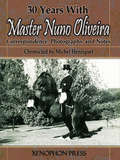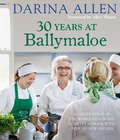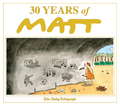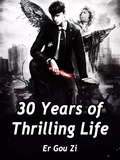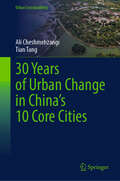- Table View
- List View
30 Steps to Finding Yourself: An Interactive Journey to Self-Discovery
by Sally HopeThis 30-step journal will take you on a unique journey to discover who you are and who you want to be. With interactive CBT-based activities, journalling prompts and actionable advice to deepen your self-awareness, this book will be your guide to understanding and empowering the most important person in your life: you.
30 Stories in 30 Minutes
by Batuta Ribeiro<p>In life - in our daily life, we experience facts, sensations and feelings. Yet most of the time, in our race against the clock, we forget to take in life’s small details. A simple moment can become unforgettable, one word can make all the difference and an action can become immortal, depending on how they are perceived.<br /> This book is a collection of short stories creating a kaleidoscope of sensations, of ephemeral moments, of ordinary facts and of things we do not understand. <br /> The author handles these from several angles - from a loving to a humorous approach - always offering the reader an easy, quick and objective read, validating the story’s essence and going straight to the point.</p>
30 Things Every Woman Should Have and Should Know by the Time She's 30
by Pamela Redmond Satran The Editors of GlamourFeaturing advice, wisdom, and observations from an array of prominent and beloved women, 30 Things Every Woman Should Have and Should Know by the Time She's 30 is an essential guide (and perfect gift) for women on the brink of thirty--and for those who are already there! Fifteen years ago, Glamour published a list of distinctive yet universally true must-haves and must-knows for women on the cusp of and beyond the age of thirty titled, "30 Things Every Woman Should Have and Should Know by the Time She's 30." It became a phenomenon. Originally penned by Glamour columnist Pamela Redmond Satran, The List found a second life when women began to forward it to one another online, millions of times. It became a viral sensation, misattributed to everyone from Maya Angelou to Hillary Clinton--but there's only one original list, and it stands the test of time. Quirky and profound, The List defines the absolute must-haves (#11: "A set of screwdrivers, a cordless drill, and a black lace bra") and must-knows (#1: "How to fall in love without losing yourself") for grown-up female happiness. Now, Glamour magazine has gathered together its editors and an incredible group of notable women to expand on each of the items on The List in wise, thoughtful, and intimate essays. Kathy Griffin meditates on knowing when to try harder and when to walk away. Lisa Ling explores the idea that your childhood may not have been perfect, but it's over, and Lauren Conrad shares what she has learned about what she would and wouldn't do for money or love. Other personal insights come from Maya Angelou, Rachel Zoe, Taylor Swift, Katie Couric, Portia de Rossi, Kelly Corrigan, ZZ Packer, Bobbi Brown, Padma Lakshmi, Angie Harmon, and many more. Along with essays based on The List, writers share their feelings about what the milestone of turning thirty meant to them. 30 Things Every Woman Should Have and Should Know by the Time She's 30 is the one book women of all ages will turn to for timely and timeless wisdom.
30 Things I Love About Myself
by Radhika SanghaniWhen Nina Mistry's life hits rock bottom, she decides to change her stars by falling in love...with herself—a hilarious, heartfelt story from outrageously funny novelist Radhika Sanghani. <p><p>Nina didn't plan to spend her thirtieth birthday in jail, yet here she is in her pajamas, locked in a holding cell. There's no Wi-Fi, no wine, no carbs—and no one to celebrate with. Unfortunately, it gives Nina plenty of time to reflect on how screwed up her life is. <p><p>She's just broken up with her fiancé, and now has to move back into her childhood home to live with her depressed older brother and their uptight, traditional Indian mother. Her career as a freelance journalist isn’t going in the direction she wants, and all her friends are too busy being successful to hang out with her. <p><p>Just as Nina falls into despair, a book lands in her cell: How to Fix Your Shitty Life by Loving Yourself. It must be destiny. With literally nothing left to lose, Nina makes a life-changing decision to embark on a self-love journey. By her next birthday, she's going to find thirty things she loves about herself.
30 Ways To Shine As A New Employee: A Guide To Success In The Workplace
by Denise Bissonnette Anita Wright John Howarth30 Ways to Shine as a New Employee
30 Ways in 30 Days to Save Your Family
by Rebecca HagelinYour Family Can Be Stronger...Your Kids Better Protected...And You Can Do It in 30 DaysAs a parent, you know the challenges against you can seem overwhelming. While you're trying to raise thoughtful, considerate, innocent children, popular culture seems to want to turn your children against you. Schools sometimes seem less places of learning than bazaars where your children are sold bad language and surly attitudes--or worse, drugs and sexually transmitted diseases. Your own day is stressful and hectic--and you worry that you're neglecting your children. And you sometimes think there's nowhere to turn for help.Now there is. Rebecca Hagelin's 30 Ways in 30 Days to Save Your Family is the guidebook every parent needs, laying out 30 practical actions--concrete, doable steps you can implement one day at a time--to restore peace in your home and reconnect with your children.In 30 Ways in 30 Days to Save Your Family, Rebecca Hagelin--a mother of three, as well as a syndicated columnist, author, and specialist on family, culture, and media issues--provides a guide for parents who want more than mere encouragement; who want a practical plan: with realistic goals, specific actions to take, and a clear path to achievement. In 30 Ways in 30 Days to Save Your Family, you'll learn:* What to say to your teen as you pass Victoria's Secret in the mall* How to make a clothing contract with your daughter* How (and why) to write a letter to your child* How to slow down your life--and your child's--so that you can enjoy your time together* How to fight the culture--and not your child* And much moreRaising your child should be a joy, not an uphill battle that leaves you frustrated or in tears. Rebecca Hagelin's 30 Ways in 30 Days to Save Your Family is a parent-tested guide to help you succeed in the most important responsibility you have--raising happy, responsible, well-adjusted kids
30 Ways in 30 Days to Strengthen Your Family
by Rebecca HagelinEvery Christian parent faces a daily dilemma: How can I bring up my children to be people of character in a culture that undermines my values? Media and cultural expert Rebecca Hagelin knows how overwhelming it is to raise kids in today's morally toxic environment. In this practical guidebook, she helps you:Learn how to battle the culture, not your childKnow the difference between your principles and your preferencesUnderstand how marketers target your children and how to keep them safe onlineDevelop and follow your "mother's intuition" and "father-knows-best" instinctsTeach your children to be good stewards of money, time, and workYou must fight to protect your children's innocence, their childhood, their character--and their future. It's a battle worth fighting. And it's a battle you can win.
30 Words: A Devotional for the Rest of Us
by Jarrid WilsonMake a habit of spending time with God--one word at a time. More than anything, our God wants us to spend time with him. But in a culture of instant downloads and drive-through lattes, we learn that faster is better and slowing down is not an option. If we look carefully at Scripture, though, we see God has calling us to live intentionally--relationally--with him. 30 Words includes verses for meditation, discussion questions for group study or personal reflection, and quotes from Christian leaders. Each day, you'll focus on a single word that can teach us about God and daily relationship with him. And along the way, you'll find encouragement to open your heart, mind, and soul to God--helping you build a habit of spiritual development with the power to transform your life and faith.
30 Years After: Issues and Representations of the Falklands War
by Carine Berbéri Monia O’Brien CastroThirty years after the Argentinian invasion of the Falkland Islands, the war remains a source of continued debate and analysis for politicians, historians and military strategists. Not only did the conflict provide a fascinating example of modern expeditionary warfare, but it also brought to the fore numerous questions regarding international law, sovereignty, the inheritance of colonialism, the influence of history on national policy and the use of military force for domestic political uses. As the essays in this collection show, the numerous facets of the Falklands War remain current today and have ramifications far beyond the South Atlantic. Covering issues ranging from military strategy to Anglo-American relations, international reactions and international law to media coverage, the volume provides an important overview of some of the complex issues involved, and offers a better understanding of this conflict and of the tensions which still exist today between London and Buenos Aires. Of interest to scholars of history, politics, international relations and defence studies, the volume provides a timely and forthright examination of a short but bloody episode of a kind that is likely to be seen with increasing frequency, as nations lay competing claims to disputed territories around the globe.
30 Years With Master Nuno Oliveira: Correspondence, Photographs, and Notes
by Michel HenriquetThis classical text, which knowledgeable horsemen have been anxiously awaiting for years, is finally available in English. Henriquet's personal record of correspondence provides a unique window into the private problem-solving dialogue between master and student. Now a master écuyer in his own right, Henriquet embellishes this new edition with 50 photographs from his personal collection. This first and only English edition includes many more photographs of Nuno Oliveira and his teacher than earlier editions. It has also been embellished with a glossary and a descriptive table of contents for the 71 chapters.
30 Years at Ballymaloe: A Celebration Of The World-renowned Cooking School With Over 100 New Recipes (Irish Cookery)
by Darina AllenWhen Ballymaloe's doors opened to students in 1983 there were 15 courses available. Now there are over 100, reflected in the recipes collected here, including curing meat, making gluten-free meals and sushi as well as learning forgotten skills like producing butter and cheese and beekeeping. The book chronicles how the school has been at the forefront of cooking and food trends since its inception, from Darina's championing of the Slow Food movement and her highlighting the importance of using local, seasonal and fresh produce to installing a wood-burning oven and expanding its gardens so students can learn the importance of eating less meat and more veg and preserving heirloom varieties of produce. A fascinating insight into Ballymaloe, this is also a history of food over the past thirty years, from a time when Darina couldn't get anything other than pre-packaged, grated Parmesan cheese to one where a local producer makes his own mozzarella.
30 Years at Ballymaloe: A celebration of the world-renowned cookery school with over 100 new recipes
by Darina AllenWhen Ballymaloe's doors opened to students in 1983 there were 15 courses available. Now there are over 100, reflected in the recipes collected here, including curing meat, making gluten-free meals and sushi as well as learning forgotten skills like producing butter and cheese and beekeeping. The book chronicles how the school has been at the forefront of cooking and food trends since its inception, from Darina's championing of the Slow Food movement and her highlighting the importance of using local, seasonal and fresh produce to installing a wood-burning oven and expanding its gardens so students can learn the importance of eating less meat and more veg and preserving heirloom varieties of produce. A fascinating insight into Ballymaloe, this is also a history of food over the past thirty years, from a time when Darina couldn't get anything other than pre-packaged, grated Parmesan cheese to one where a local producer makes his own mozzarella.
30 Years of Matt: The best of the best - brilliant cartoons from the genius, award-winning Matt.
by Matt PritchettFrom all-day opening hours to President Trump; from the first Red Nose Day to Brexit...The last 30 years has seen some momentous - and not so momentous - events. 6 Prime Ministers, 7 General Elections, from Thatcher to New Labour, Cameron's Coalition to May's Minority. 1 Brexit, 1 hung Parliament, 1 Queen, 3 Popes and the first black US President. And chronicling the entire three decades is Matt, beloved, award-winning cartoonist - and the very best there is. Whether it's beleaguered commuters, political surprises, national absurdities, Royal babies or the weather, Matt always encapsulates the moment with the perfect cartoon.'Matt is the Don Bradman of daily cartoonists - so much greater than his nearest rivals it's almost embarrassing' Stephen Fry
30 Years of Matt: The best of the best - brilliant cartoons from the genius, award-winning Matt.
by Matt PritchettFrom all-day opening hours to President Trump; from the first Red Nose Day to Brexit...The last 30 years has seen some momentous - and not so momentous - events. 6 Prime Ministers, 7 General Elections, from Thatcher to New Labour, Cameron's Coalition to May's Minority. 1 Brexit, 1 hung Parliament, 1 Queen, 3 Popes and the first black US President. And chronicling the entire three decades is Matt, beloved, award-winning cartoonist - and the very best there is. Whether it's beleaguered commuters, political surprises, national absurdities, Royal babies or the weather, Matt always encapsulates the moment with the perfect cartoon.'Matt is the Don Bradman of daily cartoonists - so much greater than his nearest rivals it's almost embarrassing' Stephen Fry
30 Years of Social Change
by Tony Attwood Stephen Jones Priscilla Alderson Gwen Adshead Barbara Kelly Paul Cooper Nisha Dogra Joyce Lishman Carola Beresford-Cooke Peter Beresford Nick Luxmoore Harriet Ward Michael Mandelstam Christiane Sanderson Vanessa Rogers Sarah Carr Luke Beardon Kim Golding Marian Liebmann Grace Watts Sally Donovan Belinda Hopkins Lorraine Nicolle Jennifer Peace Rhind Charles Buck Matthew J. Taylor Nigel Ching Dawn Brooker Winnie Dunn Cj Atkinson Rex Haigh Martin Barrow Jan Lees Jessica KingsleyWhat social change has been achieved over the past 30 years? What have been the main barriers to progress? What great achievements can we identify and celebrate today? Marking Jessica Kingsley Publishers' 30th year of publishing books on social and behavioural issues, this book gathers together over 30 leading thinkers from diverse disciplines - from autism specialists and social workers through to trans rights activists and complementary therapists. Contributors provide a thoughtful account of how their field of expertise has changed over the past 30 years, and how they see it evolving in the future. Offering a unique insight into many professions, 30 Years of Social Change highlights much of the positive social change achieved in the past 30 years across these fields and the challenges we face in the future.
30 Years of Thrilling Life: Volume 1 (Volume 1 #1)
by Er GouZiHe was a special forces soldier, so he retired and returned to his hometown. He only wanted to live a normal lifebut a trouble had him embroiled in a gang battle. Since he couldn't calm down, then he might as well do it.
30 Years of Thrilling Life: Volume 2 (Volume 2 #2)
by Er GouZiHe was a special forces soldier, so he retired and returned to his hometown. He only wanted to live a normal lifebut a trouble had him embroiled in a gang battle. Since he couldn't calm down, then he might as well do it.
30 Years of Thrilling Life: Volume 3 (Volume 3 #3)
by Er GouZiHe was a special forces soldier, so he retired and returned to his hometown. He only wanted to live a normal lifebut a trouble had him embroiled in a gang battle. Since he couldn't calm down, then he might as well do it.
30 Years of Thrilling Life: Volume 4 (Volume 4 #4)
by Er GouZiHe was a special forces soldier, so he retired and returned to his hometown. He only wanted to live a normal lifebut a trouble had him embroiled in a gang battle. Since he couldn't calm down, then he might as well do it.
30 Years of Thrilling Life: Volume 5 (Volume 5 #5)
by Er GouZiHe was a special forces soldier, so he retired and returned to his hometown. He only wanted to live a normal lifebut a trouble had him embroiled in a gang battle. Since he couldn't calm down, then he might as well do it.
30 Years of Thrilling Life: Volume 6 (Volume 6 #6)
by Er GouZiHe was a special forces soldier, so he retired and returned to his hometown. He only wanted to live a normal lifebut a trouble had him embroiled in a gang battle. Since he couldn't calm down, then he might as well do it.
30 Years of Thrilling Life: Volume 7 (Volume 7 #7)
by Er GouZiHe was a special forces soldier, so he retired and returned to his hometown. He only wanted to live a normal lifebut a trouble had him embroiled in a gang battle. Since he couldn't calm down, then he might as well do it.
30 Years of Thrilling Life: Volume 8 (Volume 8 #8)
by Er GouZiHe was a special forces soldier, so he retired and returned to his hometown. He only wanted to live a normal lifebut a trouble had him embroiled in a gang battle. Since he couldn't calm down, then he might as well do it.
30 Years of Thrilling Life: Volume 9 (Volume 9 #9)
by Er GouZiHe was a special forces soldier, so he retired and returned to his hometown. He only wanted to live a normal lifebut a trouble had him embroiled in a gang battle. Since he couldn't calm down, then he might as well do it.
30 Years of Urban Change in China’s 10 Core Cities (Urban Sustainability)
by Ali Cheshmehzangi Tian TangAs a continuation of our award-winning book ‘China's City Cluster Development in the Race to Carbon Neutrality’, this book covers China's major urban changes over the last 30 years. Unlike the previous book, where we highlighted regional development issues, this book explicitly explores the city cases, particularly those that are considered core cities in China. Based on the micro-historical analysis of China's urbanization trend and urban development patterns, we see that cities in China have played a significant role in driving the country's sustainable development agenda. In a way, they have had both positive and negative impacts on achieving sustainable development. We look at these last three decades mainly because, during this period, China's urbanization became unprecedented, the central government made several pledges and signed many international agreements related to sustainable development, and China grew rapidly to become the second global economic power. Aligned with the overarching Belt and Road Initiative (BRI) and the more recent Carbon Neutrality Plan (CNP), Chinese core cities played a significant part in regional development, urban-rural relations, industrial clustering, the development of free trade zones and special economic zones, etc. All these recent developments are due to China's ongoing urbanization and urban development. ‘30 Years of Urban Change in China’s 10 Core Cities’ is a mapping study of China's core cities and their changes over three decades of rapid urbanization, urban growth, and economic development. We explicitly highlight each selected city’s development trends, sustainable development plans, and major strategies. In this Volume (out of our two ‘connected’ volumes), we summarise lessons learnt from all 10 case study examples, and we hope they can be utilized for other developing and rapidly urbanizing nations. We expect this book to be a valuable resource for local governments, authorities, urban planners, urbanists, practitioners, developers, and urban researchers. We trust China is no longer a developing country, and much of these recent progressions are owed to its structured urban development strategies, robust governmental structure, and progressive attitude to growth and development. Hence, this topic coverage at the point where China's urbanization is shifting to high-quality urbanization is essential and beneficial to multiple stakeholders.

